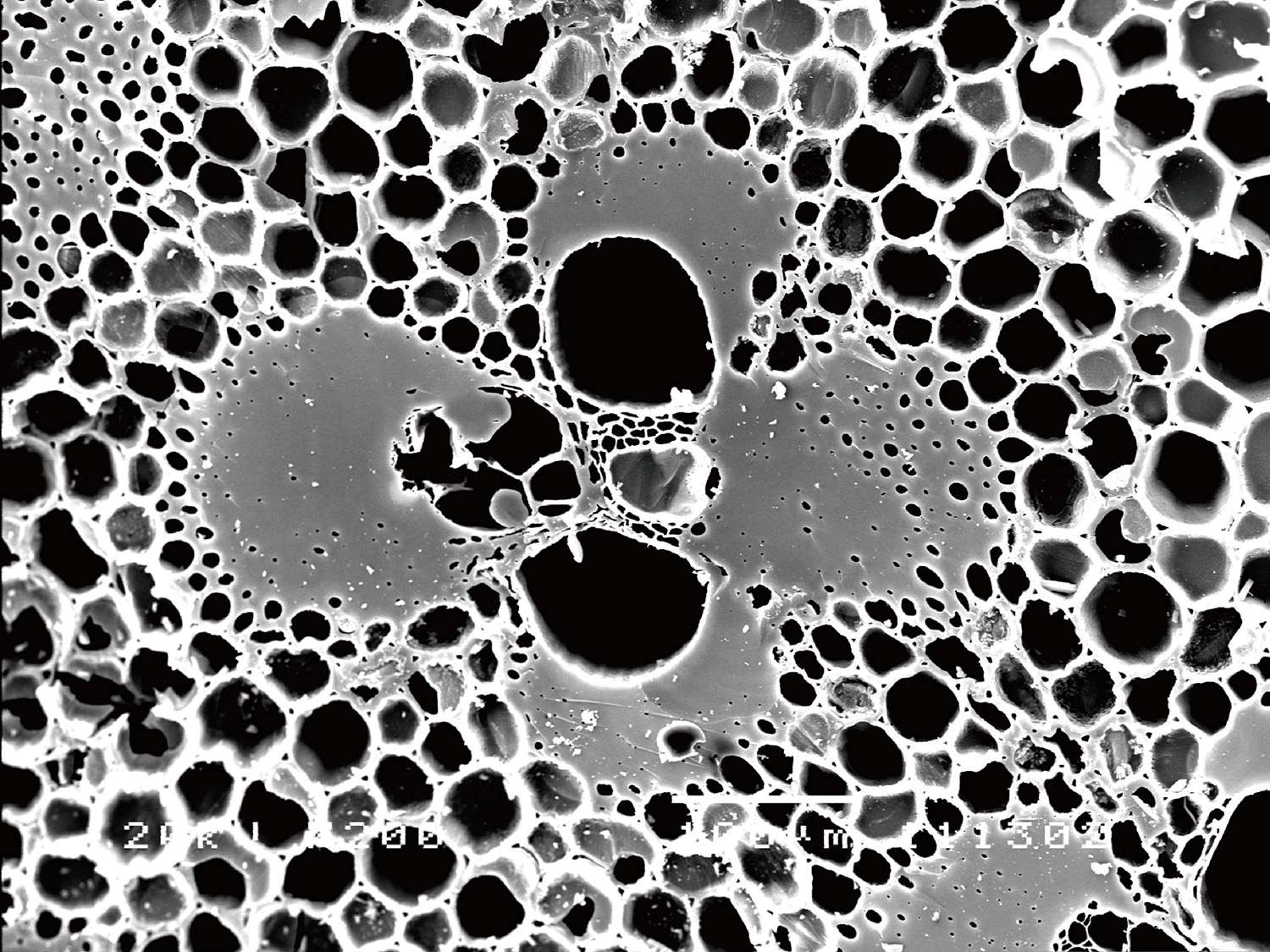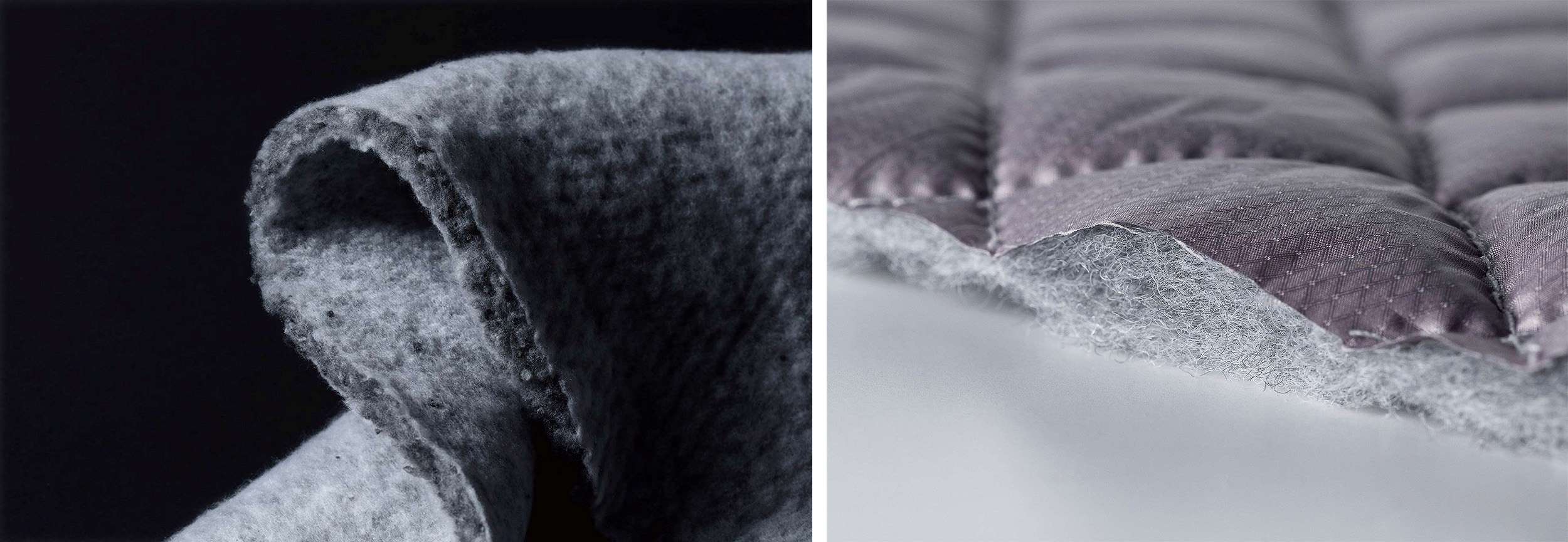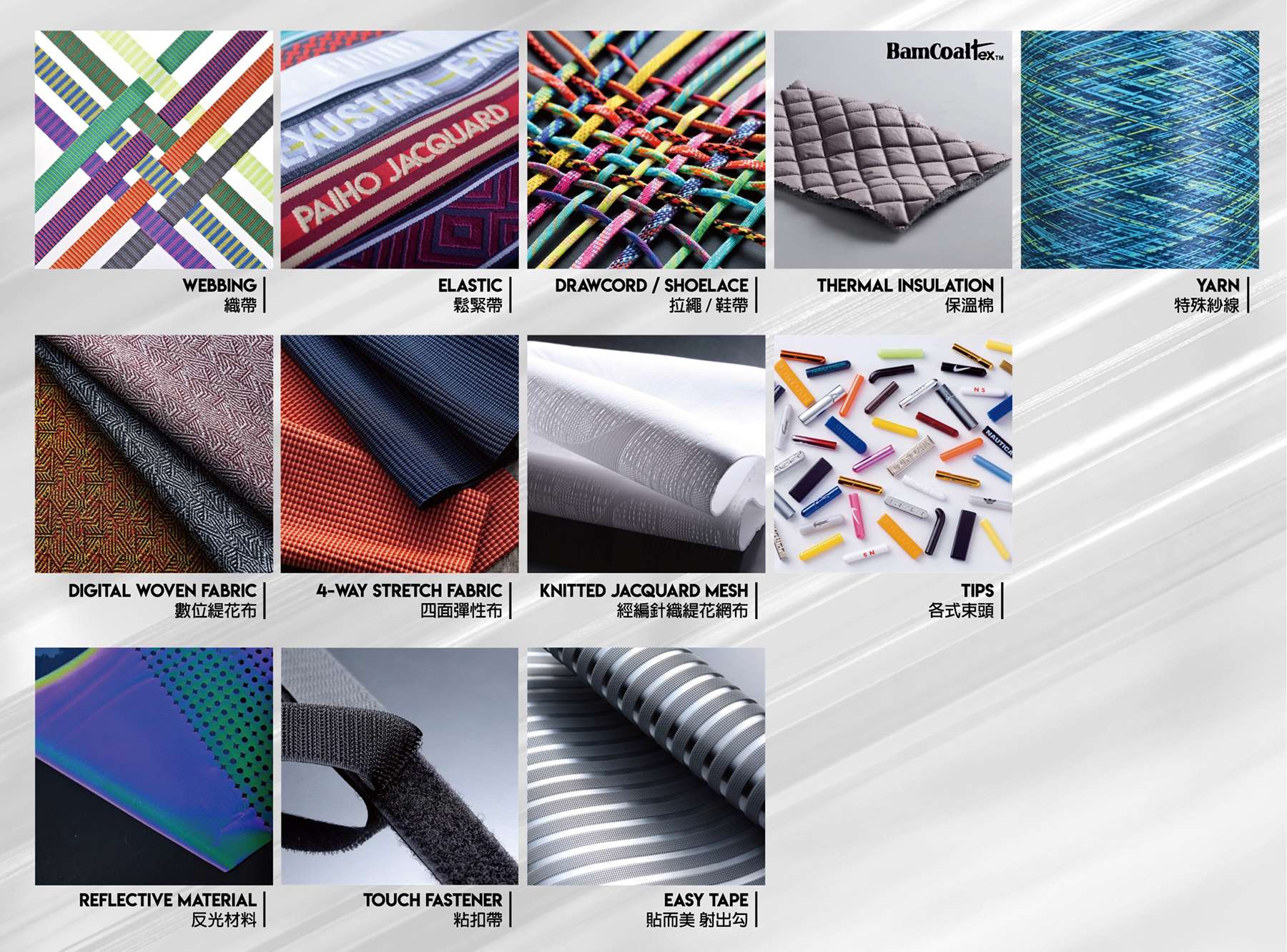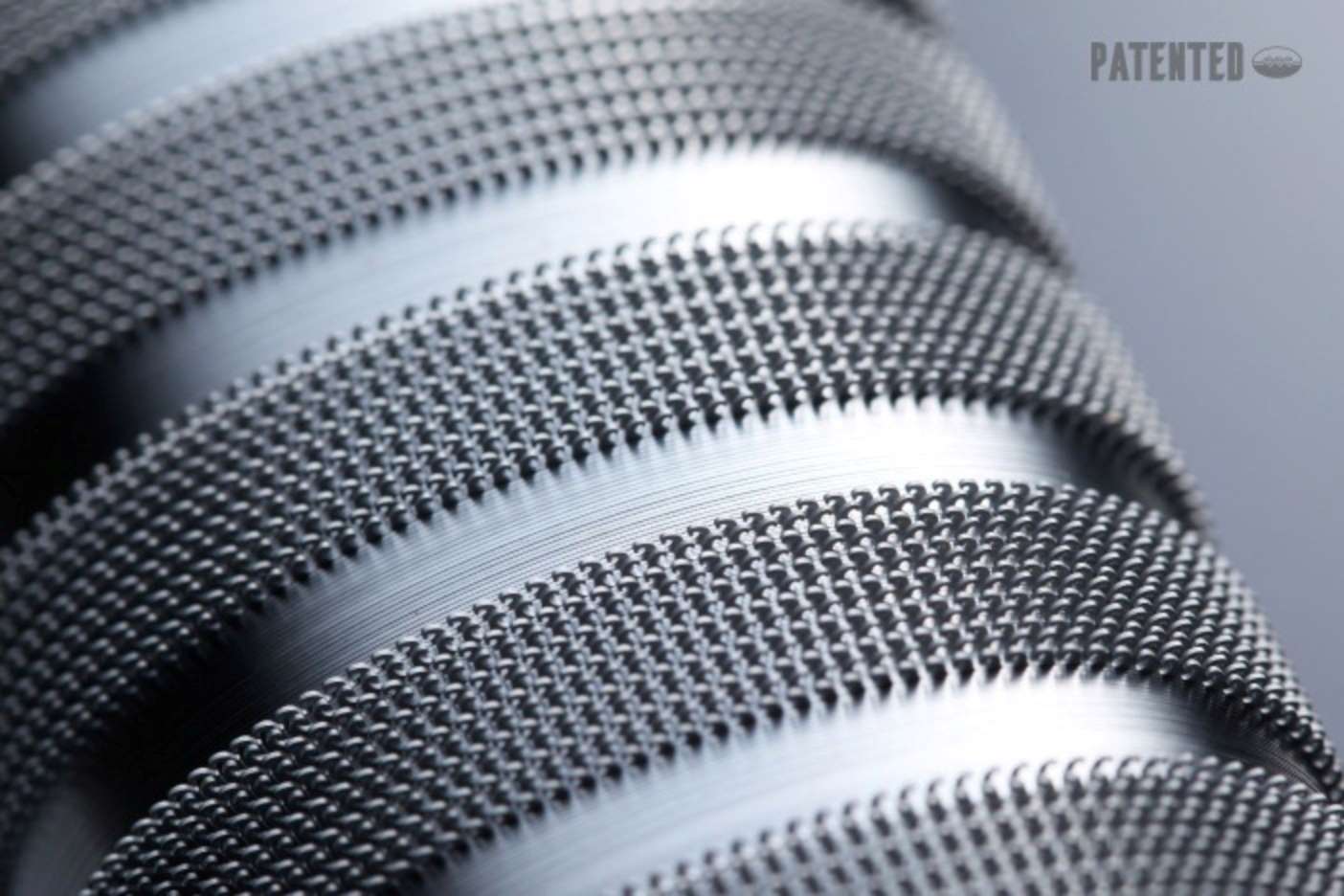
-
Understanding the commercial readiness scale
WTiN’s Commercial Readiness Scale gives an indication of what stage of commercialisation a product is at. It ranges from Emerging: a research stage development; Scaling: the product is being produced on a small but growing scale, and Commercialised: the product is well-established and ready to purchase.


Sponsored by Taiwan Textile Federation (TTF)
Ad. by TITA
Taiwan Paiho talks to WTiN about its innovative materials for thermal outdoorwear, sustainable initiatives and digital capabilities.
A new bamboo charcoal thermal isolating fibre to conserve heat in outdoorwear has been developed by Taiwan Paiho – a Taiwan-based mill that produces textiles with woven, knitted, and braided structures. Taiwan Paiho developed the new BamCoalTex material in collaboration with Taiwan’s Material Chemical and Research Laboratories (ITRI).
Sub-micron bamboo charcoal particles are added to the polyester in BamCoalTex so that they can absorb body heat into their superfine pores. The porous structure is designed to conserve the body’s heat within the spaces of the fibre in outdoorwear such as ski jackets, hiking boots and sleeping bags. It is said to enhance the thermal effect by 10% to 15%, with a moisture content lower than 1% to retain its thermal effect even when it is wet.
The thermal insulation is made without gum and using polyester with a low melting point polyester, which enables it to keep its shape after wash.
Trihook touch fasteners
Taiwan Paiho is most well-known for its Trihook touch fasteners. These multi-functional hooks and loops are woven with nylon filaments and designed for ease of use in numerous applications including footwear, apparel, electronic products and toys. They are used in products across the sectors of sportswear, health care and orthopaedics, as well as military and government.
Over the years Taiwan Paiho’s R&D teams have worked on expanding the company’s product range beyond the Trihook to include the EASY TAPE Hook and Loop. This touch fastener closure solution has been applied in the medical, sports, furniture, automotive, aircraft, and baby care sectors.
The company has also established a range of equipment and services to offer value-added processes such as welding, cutting and perforating, sewing, printing, laminating, injection and moulding.
The company offers raw materials such as functional yarn and special materials such as reflective powder and film, through to webbings, drawcord, and fabrics at the middle end, as well as back-end processes and services to meet customers’ post-production requirements.
Tony Tseng, director of R&D, describes the company as, “A one-stop solution provider that is vertically integrated from the front-end”.
Digitalisation for efficiency
The mill has embraced digitalisation and leveraged it to create its online product database the Material Hub. To make the process of fashion design more efficient, this media platform features more than 3,000 materials and enables designers and developers to explore features such as physical properties, style, colours, performance, origin, content, and structure in the early stages of their projects.
“Our customers can also benefit from the 360° Paiho immersive experience, which offers digitalised material assets and 3D virtual sample models to give the most realistic presentation of the appearance of materials,” says Tony Tseng, director of R&D for the company.
“The visualisation processes and outcomes break down barriers of time and distance and bring the latest information to our clients anywhere, anytime,” says Tseng.
The company has digitalised its development and production workflow, which has made resource management and control more precise, thus reducing levels of waste associated with physical samples and stocks.
The company has also leveraged technology for more efficiency and environmental benefits in its digital Jacquard-woven fabric. This is produced in a one-stop weaving process that is said to have less negative environmental impact than conventional denim fabric processes because it reduces levels of wastewater pollution caused by the dyeing, bleaching, and ripping processes used to process conventional denim fabric.
Achieving stringent targets for environmentally friendly production processes is becoming an increasingly pressing legal requirement for the textile industry.
Tseng says the company’s Raindrop Collection System and facilities in Vietnam and Indonesia collect 700 tons of rainwater every month. The company also has a Reverse Osmosis Treatment Facility, which treats 775,000 tons of wastewater a year for reuse.
“80% of this water is (620,000 tons) drinkable after reverse osmosis treatment,” says Tseng. “In addition, 9,900 tons of daily treatment capacity is reused in our manufacturing processes.”
The company also reuses the steam generated by the dyeing process and reduces indoor temperature from hot steam at the same time.
“By reusing steam, we can reduce heating time and save energy,” says Tseng.
What’s more, the company has reduced waste by re-extruding waste yarn.
Tseng explains: “We pelletise the waste yarn or recycled plastic bottles and drying, melting flake, and cutting, then crystallised recycled PET pellets extrude fibre for textiles. PET recycled yarn is available for all models of woven and knitted fabrics, webbings, elastic, or drawcords.”
Keeping business transparent
Transparency is also becoming a more pressing legal requirement for today’s textile industry. To achieve a more efficient management system for the diversified materials and categories it works with, Paiho planned and built its enterprise resource planning (ERP) system for resources management, order and tracking, manufacturing conditions, and shipping and logistics.
Tony adds: “With our automatic storage retrieval system for raw materials, semi-products, and finished products, Paiho can always manage and track our material resources and information.”
He says the mill also “actively cooperates with all the environmental protection measures of the Zero Discharge of Hazardous Chemicals (ZDHC)”.
“Going green and leaving a smaller carbon footprint are well-recognised trends for the future of the textile industry,” says Tony. “Paiho has adopted diverse solutions for more eco-friendly materials, introducing recycled and upcycled raw materials, water-saving and energy-saving processes, and natural content like flax and FSC-certified paper fibre.”
Having its headquarters in Taiwan means the mill benefits from being in the heart of the country’s vertically integrated textile industry, which has a comprehensive supply chain and systems that have been established to service the global market for textiles.
Taiwan as a business hub
“Taiwan’s geographical proximity to upstream and downstream manufacturers of trim materials in Asia, such as China, Korea, Japan, Vietnam, and Indonesia, enables efficient order delivery and reduces lead times,” says Tony.
To enable easier communication and production collaboration with its clients, Paiho has also established marketing and manufacturing branches close to key global markets such as China, the EU and the US. It has branches in Wuxi and Dongguan in China, as well as Vietnam, Indonesia, and North America.
“Working this way has enabled us to build partnerships with more than 100 global brands and manufacturers,” says Tseng.
Have your say. Tweet and follow us @WTiNcomment










